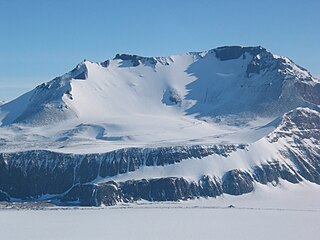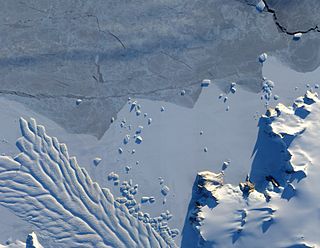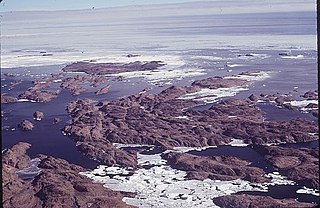See also
![]() This article incorporates public domain material from "Svenner Islands". Geographic Names Information System . United States Geological Survey.
This article incorporates public domain material from "Svenner Islands". Geographic Names Information System . United States Geological Survey.
Svenner Islands ( 69°2′S76°50′E / 69.033°S 76.833°E ) is a small group of islands and rocks lying 14 nautical miles (26 km) southwest of Rauer Islands in the southeast part of Prydz Bay. Discovered in February 1935 by a Norwegian expedition led by Captain Klarius Mikkelsen. He charted the two main islands in the group and applied the name Svenner after the islands of that name near Sandefjord, Norway. The group was plotted in greater detail from air photos taken by the Lars Christensen Expedition, 1936–37.
![]() This article incorporates public domain material from "Svenner Islands". Geographic Names Information System . United States Geological Survey.
This article incorporates public domain material from "Svenner Islands". Geographic Names Information System . United States Geological Survey.

The Prince Albert Mountains are a major mountain group in Antarctica over 200 nautical miles long. Located in Victoria Land, they run north–south between the Priestley Glacier to the north and Ferrar Glacier to the south. They are south of the Deep Freeze Range and north of the Kirkwood Range.

The Executive Committee Range is a range consisting of five major volcanoes, which trends north-south for 50 nautical miles along the 126th meridian west, in Marie Byrd Land, Antarctica.

D'Urville Island is the northernmost island of the Joinville Island group in Antarctica. It is 27 kilometres (17 mi) long, lying immediately north of Joinville Island, from which it is separated by Larsen Channel.

The Dailey Islands are a group of small volcanic islands lying off the coast of Victoria Land, 9 kilometres (5 nmi) northeast of Cape Chocolate, in the northern part of the ice shelf bordering McMurdo Sound. They were discovered by the British National Antarctic Expedition, 1901–04, under Robert Falcon Scott, and named for Fred E. Dailey, the expedition carpenter.
Wilson Hills is a group of scattered hills, nunataks and ridges that extend northwest–southeast about 70 nautical miles between Matusevich Glacier and Pryor Glacier in Antarctica.
The Mariner Glacier is a major glacier over 60 nautical miles long, descending southeast from the plateau of Victoria Land, Antarctica, between Mountaineer Range and Malta Plateau, and terminating at Lady Newnes Bay, Ross Sea, where it forms the floating Mariner Glacier Tongue.
The Duroch Islands are a group of islands and rocks which extend over an area of about 3 nautical miles, centred about 1 nautical mile off Cape Legoupil on the north coast of Trinity Peninsula, Antarctica. The islands are close to Chile's Base General Bernardo O'Higgins Riquelme at Cape Legoupil.

Olstad Glacier is a heavily crevassed glacier descending to the west coast of Peter I Island about 2 nautical miles (3.7 km) south of Tofte Glacier. Peter I Island was circumnavigated by the Norwegian whale catcher Odd I in January 1927 and was explored from the Norvegia in February 1929.
Vivaldi Glacier is a glacier lying between the Colbert Mountains and the Lully Foothills, flowing south from Purcell Snowfield into the head of Schubert Inlet on the west coast of Alexander Island, Antarctica. The feature appears to be first shown on maps of the United States Antarctic Service (USAS) which photographed Alexander Island from the air in 1940. It was mapped from air photos obtained by the Ronne Antarctic Research Expedition in 1947–48, by Searle of the Falkland Islands Dependencies Survey in 1960. Named "Vivaldi Gap" by the United Kingdom Antarctic Place-Names Committee in 1961, after Antonio Vivaldi (1678–1741), Venetian composer. The name was amended to Vivaldi Glacier following review of Landsat program imagery, 1979, displaying flow lines in the feature.

Matusevich Glacier is a broad glacier about 50 nautical miles long, with a well developed glacier tongue, flowing to the coast of East Antarctica between the Lazarev Mountains and the northwestern extremity of the Wilson Hills.

Granite Harbour is a bay in the coast of Victoria Land, Antarctica, about 14 nautical miles long, entered between Cape Archer and Cape Roberts. It was discovered and named by the British National Antarctic Expedition (BrNAE) of 1901–04 in the Discovery in January 1902, while searching for safe winter quarters for the ship. The name derives from the great granite boulders found on its shores.
Hilton Inlet is an ice-filled inlet, 12 nautical miles wide, which recedes about 22 nautical miles west from its entrance between Cape Darlington and Cape Knowles, along the east coast of Palmer Land, Antarctica.

Mackay Glacier is a large glacier in Victoria Land, descending eastward from the Antarctic Plateau, between the Convoy Range and Clare Range, into the southern part of Granite Harbour. It was discovered by the South magnetic pole party of the British Antarctic Expedition, 1907–09, and named for Alistair Mackay, a member of the party. The glacier's tongue is called Mackay Glacier Tongue. First mapped by the British Antarctic Expedition, 1910–13 and named for Alistair F. Mackay, a member of the party. Its mouth is south of the Evans Piedmont Glacier and the Mawson Glacier. It is north of the Wilson Piedmont Glacier and the Ferrar Glacier.

The Rauer Islands are a group of rocky coastal islands which lie between Sorsdal Glacier Tongue and Ranvik Bay, in the southeast part of Prydz Bay. Discovered and roughly charted in February 1935 by a Norwegian expedition under Captain Klarius Mikkelsen. He named them Rauer, probably after the island lying in Oslofjorden opposite Tønsberg, Norway.
Rennick Bay is an embayment of the coastline of Antarctica at the terminus of Rennick Glacier. It is bounded on the west and east by Belousov Point and Stuhlinger Ice Piedmont.

Lemaire Island is an island 4.5 nautical miles long and 1.5 nautical miles wide, lying 1 nautical mile west of Duthiers Point off the west coast of Graham Land, Antarctica.
Bryde Island is an island 6 nautical miles long and 3 nautical miles wide, lying immediately southwest of Lemaire Island, off the west coast of Graham Land, Antarctica.

Amanda Bay, also sometimes known as Hovde Cove, lies in southern Prydz Bay on the Ingrid Christensen Coast of Princess Elizabeth Land, East Antarctica. It is best known for its breeding colony of several thousand pairs of emperor penguins on sea ice at the south-west corner of the bay.